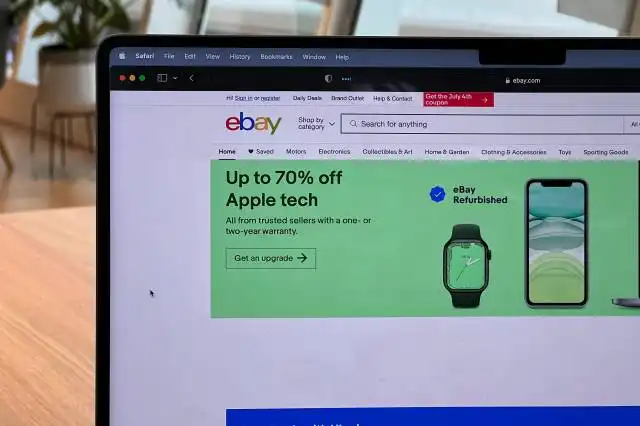Start an Amazon Drop Shipping Business
The Magic of Virtual Middlemanning: A No-Inventory Success Story
| Updated


AMAZON DROP SHIPPING BUSINESS
An Amazon drop shipping business is like running a convenience store without the hassle of restocking shelves! This innovative operation model lets you sell products directly from the manufacturer to your customers without ever having to touch or store inventory yourself. One minute you're the virtual middleman, next minute you're raking in profit! It's the ultimate online hawker stand, just without the shouty bargains and wonky tables.
Jump to Business Plan
RELATED BUSINESS IDEAS
Browse ALL Retail & Shopping Business Ideas
Discover Your Perfect Domain
Unlock the door to your online success with our hand-picked selection of premium domain names. Whether you're starting a new venture or rebranding an existing one, the right domain can set the tone for your digital presence. Browse through our curated list, each with its unique potential to enhance your brand's visibility and credibility.
AMAZON DROP SHIPPING MINI BUSINESS PLAN
This a quick reality check to help you identify the strengths and weaknesses of your business concept before you dive in.
Expected Percent Margin:
- Gross Margin: Typically 10-30%
- Net Profit Margin: Around 5-15%
Earnings Expectations:
- Daily Earnings: $100 - $500
- Weekly Earnings: $700 - $3,500
- Monthly Earnings: $2,800 - $14,000
- Annual Earnings: $33,600 - $168,000
Actions to Hit Those Numbers:
Product Selection:
- Niche Selection: Research and select a profitable niche, ideally with lower competition.
- Product Selection: Find products with good reviews and sales that provide good margin.
Supplier Partnership:
- Find Suppliers: Use platforms like Alibaba or SaleHoo to find reliable and cost-effective suppliers.
- Pricing Negotiation: Negotiate prices with suppliers to maximize your margin.
Set Up Amazon Seller Account:
- Seller Account: Create a seller account with Amazon, choosing Fulfilled by Amazon (FBA) can help with logistics.
- Listings: Create compelling listings with high-quality images and descriptions.
Marketing and Optimization:
- Amazon SEO: Optimize listings with relevant keywords to rank higher in search results.
- Ads: Utilize Amazon's sponsored ads to increase visibility.
Customer Service:
- Post-Sale Service: Promptly handle queries and complaints for better customer experience and ratings.
Remember, these are only general estimates and actual margins and earnings can vary significantly based on the specific niche, competition, cost structure, and your ability to effectively manage and grow the business.
NOT WHAT YOU HAD IN MIND? Here are more ideas



Browse ALL Retail & Shopping Business Ideas
Grab Your Business Website Name
Before you get caught up in the whirlwind of setting up your business, invest in a domain name. It's a small but significant step that lays the foundation for your brand and makes it easier for customers to find and trust you. Just like you wouldn't build a house without securing the land first, don't build a business without securing your domain name.
"Why? Can't that wait?" Here's why it shouldn't
Step 1: Determine if Drop Shipping is Right for You
When considering starting an Amazon drop shipping business, the first step is to determine if it is the right endeavor for you. This includes taking a look at the startup and ongoing expenses associated with the business, as well as understanding the ways in which you can make money.
When it comes to startup expenses, you will need to consider the cost of setting up an Amazon account, the cost of any software or tools you may need to help manage your business, and the cost of any marketing or advertising you may need to do to get your business off the ground. You will also need to consider the cost of any inventory you may need to purchase, as well as any shipping and handling costs associated with your business.
When it comes to ongoing expenses, you will need to consider the cost of any software or tools you may need to help manage your business, as well as the cost of any inventory you may need to purchase. Additionally, you will need to consider the cost of any marketing or advertising you may need to do to keep your business running. You will also need to consider the cost of any shipping and handling costs associated with your business.
When it comes to making money, you will need to consider the cost of the products you are selling, as well as any fees associated with selling on Amazon. Additionally, you will need to consider any fees associated with shipping and handling, as well as any fees associated with marketing or advertising. Finally, you will need to consider any fees associated with any software or tools you may need to help manage your business.
Step 2: Name Your Business
When deciding on a name for your Amazon drop shipping business, it is important to choose something that is memorable and easy to spell. Consider using words that are related to the products you are selling, or words that have a positive connotation. You may also want to consider using a name that is unique and stands out from the competition. Additionally, make sure to check that the name you choose is not already in use and is available for you to register.
Register Your Business
Once you have chosen a name for your business, you will need to register it with the appropriate government agencies. Depending on the type of business you are running, you may need to register with the state, county, and/or federal government. This process can vary depending on the jurisdiction, so it is important to research the requirements for your specific area. Additionally, you will need to obtain any necessary permits and licenses that may be required for your business. This may include a business license, sales tax permit, and/or other permits. Once you have obtained all of the necessary paperwork, you can officially register your business.
Step 3: Research Your Products
Researching the Market
Before you can start selling products, you need to know what products are in demand and what products are selling well. Research the market to find out what products are popular and what products have potential to be profitable. Look at trends in the industry and analyze the competition to determine what products you should be selling. You should also research the pricing of the products to make sure you are offering competitive prices.
Finding Suppliers
Once you have identified the products you want to sell, you need to find suppliers who can provide you with the products. You should research different suppliers to find the best prices and quality of products. Make sure to read reviews and ask for references to ensure that you are working with a reputable supplier. You should also make sure that the supplier can provide you with the quantity of products you need and that they can deliver the products in a timely manner.
Step 4: Create Your Brand
Creating a logo
A logo is a visual representation of your brand and is an important part of your business identity. It should be simple, memorable, and recognizable. When creating a logo, consider the colors, font, and shape that best represent your brand. You can use a logo maker or a graphic designer to create a logo that will help you stand out from the competition.
Creating a website
A website is essential for any business, and it’s important to make sure that your website is professional and user-friendly. You can use a website builder to create a website quickly and easily. Make sure to include information about your business, products, and services, as well as contact information. You can also include a blog to share helpful information with your customers. Additionally, make sure to include a shopping cart and payment processing system so customers can easily purchase your products.
Step 5: Set Up Your Payment System
Setting up a merchant account
A merchant account is a type of bank account that allows businesses to accept payments from customers. It is important to set up a merchant account in order to accept payments from customers for your drop shipping business. When setting up a merchant account, you will need to provide information about your business, such as your business name, address, and contact information. You will also need to provide information about the type of payments you will accept, such as credit cards, debit cards, and PayPal. Additionally, you will need to provide information about your bank account, such as the account number and routing number. Once you have provided all of the necessary information, you will need to wait for the merchant account to be approved. Once approved, you will be able to start accepting payments from customers.
Setting up a payment gateway
A payment gateway is a service that allows customers to make payments online. When setting up a payment gateway, you will need to provide information about your business, such as your business name, address, and contact information. You will also need to provide information about the type of payments you will accept, such as credit cards, debit cards, and PayPal. Additionally, you will need to provide information about your merchant account, such as the account number and routing number. Once you have provided all of the necessary information, you will need to wait for the payment gateway to be approved. Once approved, you will be able to start accepting payments from customers. Additionally, you will need to set up a secure connection between your website and the payment gateway. This will ensure that all payments are securely processed and that customers' information is kept safe.
Step 6: Create Your Listings
Creating product listings is an important step in setting up your Amazon drop shipping business. You need to make sure that you accurately describe the products you are selling, including any relevant details such as size, color, and material. Additionally, you should include high-quality images of the products to give potential customers a better idea of what they are buying. You should also include any relevant information about shipping and returns policies, as well as any other customer service policies.
Creating customer service policies is essential for any business, and it is especially important for an Amazon drop shipping business. You need to make sure that you have policies in place for handling customer inquiries, returns, and refunds. Additionally, you should have a policy for dealing with any product issues that may arise. You should also have a policy for dealing with any disputes that may arise between you and your customers. Having a clear and concise customer service policy will help you to ensure that your customers are satisfied with their purchase.
Step 7: Promote Your Business
Utilizing social media is a great way to promote your Amazon drop shipping business. You can create a business page on popular social media platforms such as Facebook, Twitter, Instagram, and LinkedIn. This will allow you to reach a wide audience and create a following for your business. Additionally, you can use social media to advertise special offers, discounts, and new products. You can also use social media to answer customer questions and build relationships with potential customers.
Utilizing search engine optimization is another great way to promote your Amazon drop shipping business. SEO is the process of optimizing your website content so that it appears higher in search engine results. This will help potential customers find your business more easily. You can use SEO tactics such as keyword research, content optimization, and link building to increase your website’s visibility. Additionally, you can use SEO to create content that is targeted towards potential customers. This will help you build relationships with potential customers and increase your sales.
Step 8: Fulfill Orders
Processing orders
After a customer places an order, the drop shipper must process the order. This includes confirming the order, collecting payment, and notifying the supplier to ship the product. The drop shipper must also be sure to update the customer with the order status and tracking information. Additionally, the drop shipper should be prepared to handle any customer service inquiries that may arise.
Shipping orders
Once the supplier ships the order, the drop shipper must then ship the order to the customer. This involves selecting the appropriate shipping method, packing the order, and shipping the order. The drop shipper must also be sure to include any promotional materials or other items that the customer may have requested. Additionally, the drop shipper should be prepared to handle any customer service inquiries that may arise.
Step 9: Track Your Performance
Analyzing sales data
Once you have your Amazon drop shipping business up and running, it is important to track your performance. This includes analyzing sales data to determine which products are selling the best and which are not. You can use this data to adjust your pricing and determine which products are worth investing in and which are not. Additionally, you can use this data to determine which marketing strategies are working and which are not.
Adjusting pricing
Once you have analyzed your sales data, you can use it to adjust your pricing. This is important because it allows you to maximize profits and ensure that you are not overcharging for your products. Additionally, you can use this data to determine which products are worth investing in and which are not. This can help you make better decisions when it comes to investing in new products and marketing strategies.
EXPLORE MORE CATEGORIES
Browse ALL Business Idea Categories
TAKE THE NEXT STEPS









